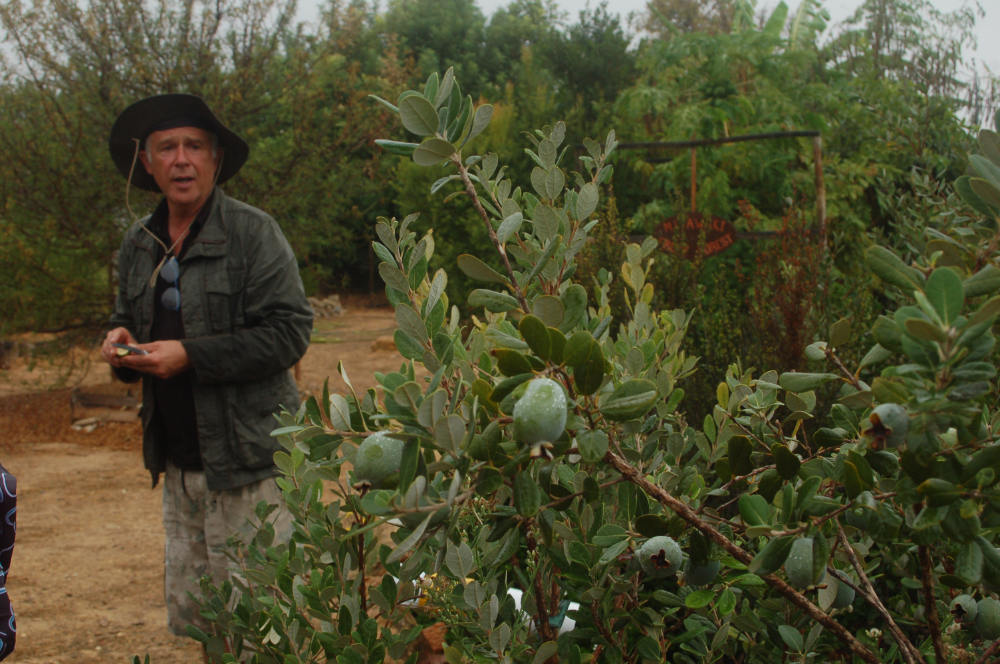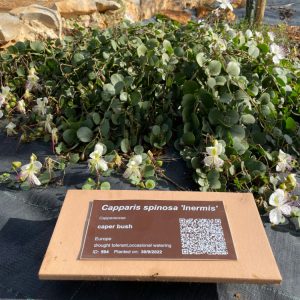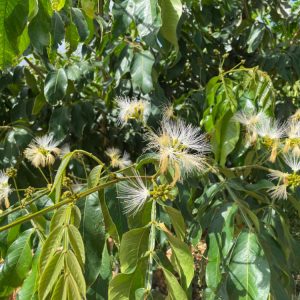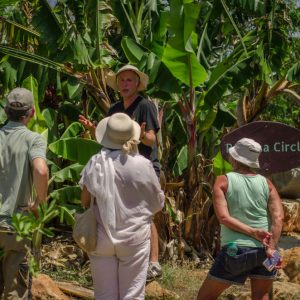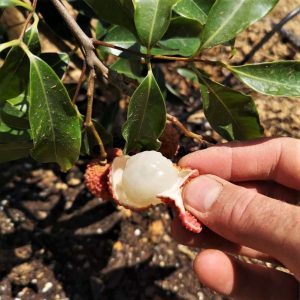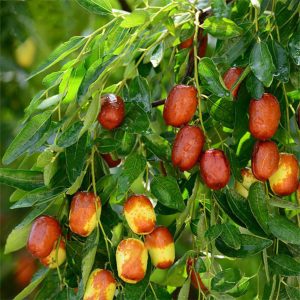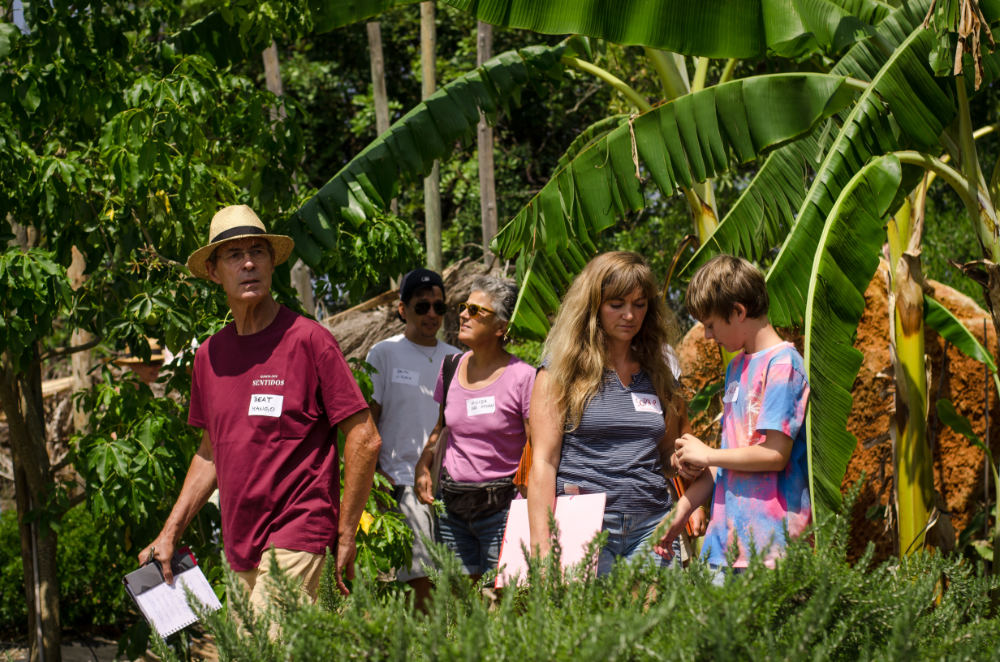Saturday 19th October 2024.

Every botanical garden has something magical about it. Whenever I visit a botanical garden, I imagine that I am immersed in a magic world of trees, plants and little hidden animals. Furnas, on the island of São Miguel in the Azores, enchanted me from the very beginning. By chance, I had my swimming trunks and a towel with me and came across a huge round swimming pool with warm water from volcanic geysers in the middle of the forest. The water wasn’t clear and clean; no, it was brown, like the earth, and smelled a little of sulphur. I carefully let myself slide into the pool. And the temperature was just under 30 degrees Celsius. Wonderful! In winter, of course, it was an oasis of well-being; in summer, you couldn’t spend more than 15 minutes in it. So, whenever I visit a botanical garden today – no matter where – I have the impression that this magic will continue. Whether I’m in Lisbon or in Gothenburg (Sweden), where there are old botanical gardens, I am always struck by the peace and tranquillity that these natural hideaways offer me, despite all the noise of these big cities. You enter the garden and are immediately swallowed up; you don’t want to escape the pull of nature. So, I have got into the habit of conducting all my interviews in Lisbon on a bench in the botanical gardens. Escaping the hustle and bustle of daily life, finding peace, regaining inner equilibrium, floating and communicating with one another.
I travelled to Moncarapacho (in the Eastern Algarve) last week and began looking for “Pomar dos Sabores” (the Orchard of Flavours). I couldn’t find it at first, because it was hidden, so I developed the idea that I was looking for a hidden treasure and that I would find it. After travelling exactly one hundred kilometres (from Monchique), I arrived and cautiously entered this park of edible plants and trees. As I made my way around, I came across a group of visitors on a guided tour, and I decided that I would like to join them. I caught up with the group when they arrived at the edible succulents and was welcomed into it by Miguel Cotton, the Belgian father of the project. During the tour, we arranged an interview via ZOOM for the following day. Firstly, we visited the small Miyawaki forest of fruit trees: the moringa trees were not to be missed; papaya also grows well in the Eastern Algarve, as do many other plants – the coffee tree, for example.
I already knew that the botanist Akira Miyawaki died three years ago, in July 2021, at the ripe old age of 93, because I had studied this Japanese botanist in some depth. He left us the so-called Miyawaki forest, and his model caught my interest because these small forests can grow in less than 20 years…
The Miyawaki method is a reforestation technique whereby crops of fast-growing native trees are planted, in a variety of dense mixed planting that is intended to simulate the layers of a natural forest. Akira Miyawaki won the Blue Planet Prize in 2006. The Blue Planet Prize recognises outstanding achievements in scientific research or in the application of science that contribute to solving global environmental problems.
The method that was developed in the early 1970s by the ecologist Akira Miyawaki for regenerating forests that have degenerated, for example, as a result of forest fires or the planting of monocultures, consists of the following steps: identifying the plant species native to a particular area; improving the soil by mixing in organic material; planting seedlings of native trees and understory plants in a dense, mixed form (about three seedlings per square metre) in order to simulate a natural forest; removing weeds from the site for up to three years after planting, if necessary. After that, the grove of trees is left to its own devices. Due to the dense planting, the seedlings grow quickly as they compete for sunlight.
Miguel Cotton (aged 57) comes from Belgium and worked in business as a lawyer, while also teaching science at the University of Brussels. He spent many years looking for a place suitable for realising his dream of planting a botanical fruit garden. He found the exact spot he needed in the Eastern Algarve between Tavira and Moncarapacho. ECO123 visited him there.
ECO123: When you work in the EU with foreign trees from all over the world, what do you do, to know exactly that they are not invasive trees? We have very serious problems in the Algarve and in Portugal with invasive tree species like acacia and mimosa trees from Australia, which are resilient pioneer plants that grow like weeds after a forest fire. Are you aware of this?
Miguel Cotton: It depends on the context. One tree species which is invasive in one country may not be invasive in another country, because of the climate. Furthermore, in answer to your question, there is another point regarding fruit trees. Fruit trees are almost never indigenous. Fruit trees have been coming from other areas, for centuries. Otherwise, you wouldn’t have any fruit or vegetables. You wouldn’t have any potatoes or tomatoes; you wouldn’t have any apples, pears or almonds… You wouldn’t have any pomegranates, because these originally came from Iraq. Carobs are not indigenous to Portugal. The carob tree comes from Libya and from Lebanon. It is almost nonsense to talk about indigenous fruit trees. Of course, we pay a lot of attention to the question of invasive species: we check trees to see if they are invasive in their country, and whether they could be invasive here. All of this is very well documented. We are not totally blind. When you’re talking about trees, there’s a lot of documentation available nowadays. I’ve never imported any tree from outside the EU.
ECO123: Can we now discuss some economic themes relating to your Botanical Garden? Who is financing it? How is it funded?
Miguel Cotton: It is a huge investment, which I financed myself. We are now registered as a nonprofit organisation in Portugal, an association. So, we have members, and we also have donations from visitors – we have a lot of visitors, and we also give workshops. I think it will be sustainable – even by the end of this year. We are doing our best to ensure that all the costs, and maybe even future developments, are fully covered by our income: membership and visitors.
ECO123: You need people who work with you and the trees. Are these people woofers and how do you choose them?
Miguel Cotton: I have always had only workers with a scientific background here. Otherwise I am wasting my time.
ECO123: Do you have a family? Children?
Miguel Cotton: No, I have no family. No children. I have trees. That’s enough. Our motto is: inspiration, education and enjoyment. These are the three things we’re working on the most. Empowering people, making them learn, learn and learn; but we’re also aware of the fact that kids can be very happy and enjoy themselves here through their stomach. It isn’t boring: the main mission of the garden is to inspire, to educate and to enjoy.
ECO123: Thank you very much.
 Eco123 Revista da Economia e Ecologia
Eco123 Revista da Economia e Ecologia

